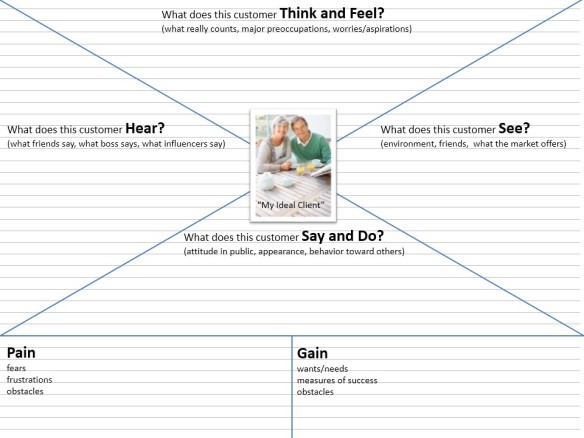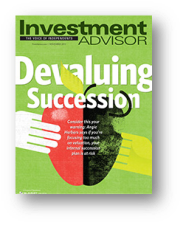by George Ray
Over the last few years there have been numerous practice management articles on the subject of succession planning. And, as you may know, few advisers have done much about it. In sessions that I’ve conducted, I’ve asked advisers ‘How many of you have a succession plan?’ Typically, fewer than half of the advisers in the room will raise their hands. Even more telling, when I’ve asked those who actually have a written plan to keep their hands raised, most of the hands go down. And, when asked to keep their hands up if their written succession plan includes a funding mechanism in place to actually complete the sale or transfer of the business, usually there are no hands left.
Why do so few advisers have a succession plan? Here are some of the most common answers I’ve heard:
- Too busy building the business currently to deal with it
- It’s too far into the future to think about now
- Not sure what the business is worth, or will be worth
- Haven’t found the right candidate to take over
The first two answers are really just excuses. Succession should always be an objective for a business owner no matter how busy you are or how far into the future it will be before you retire. We don’t let our clients wait until the last few years before retirement to start planning, so why should we?
In an article in Investment Advisor Magazine’s January 2014 issue titled “Untangling Ownership”, Charles Farrell and Fred Taylor of Northstar Investment Advisors of Denver, CO understand the real issues. “In order to build any kind of enterprise value, to be worthy of receiving some sort of buyout when you retire, you have to build a business not a practice”, says Farrell, CEO for Northstar.
And this is the issue. Most independent advisers, build a practice that is unique to them. They market themselves and their own money management philosophy. Advisers desire to show clients that they are unique in order to attract new business. But this ‘uniqueness’ can backfire on you because when you leave, your business is no longer about you. So, what’s left for your clients after you told them that you are the pied piper?
Farrell goes on to tell us that “Saying you have a practice that’s unique to you, the clients are tied to you, the philosophy’s tied to you; there’s really no way for anyone to buy you out because there’s no way to tell how many of those clients will stay, what sort of revenue you’ll generate, not a year or two out, but really 10 years out”. Why would another adviser want your mice? They must be retrained to follow him. How long will that take? What will it cost him? And, how much effort will be needed?
This is why many succession plans have to include a transition element as well. The outgoing adviser has to remain on board for a period of time so that he can introduce his mice to the new adviser’s tune. (The transition is also usually necessary because no funding mechanism was put in place early on, so the adviser must accept a note for a portion of the purchase, which doesn’t give him all the cash that he needs to walk away cleanly and fulfill his own retirement plans.)
How do you avoid some of the challenges to succession planning? Unfortunately, it may not be possible for some advisers. Charles Farrell mentions that many advisers who start their own firms are Type A personalities. “They don’t like to listen to other people. They don’t play well in groups.” Many independent advisers leave wire houses or larger practices because they want to strike out on their own. They want to avoid ‘managing people’ and dealing with all of the issues (i.e., hassles) that go along with working (or managing, or owning) a large firm. But, it’s the avoidance of dealing with those very issues that will also prevent you from turning your practice into an ongoing business that will have value after you leave.
If you want your business to have value, you need to build value throughout the life of your business by recruiting associates who will eventually become partners. You’ll need a program to transfer ownership to those partners to provide incentive for them to remain with the firm (‘their’ firm). You’ll also need to change your thinking when it comes to making the business all about you, Mr. Type A, by creating an offering (including processes, communications, etc.) that will make clients loyal to the firm – rather than just you.
This is no easy task, and cannot be accomplished in the few years before you’re ready to retire. Just like we tell our clients, the sooner you begin, the more likely you’ll be to accomplish your objectives. I reccomend that you read this excellent article at thinkadvisor.com for more insights from a group of advisers who have been successful in creating a business that will be able to transfer value to its advisers when they are ready to depart, while retaining value for their clients who stay on.
So, what’s your firm worth, without you? Well, that’s really up to you — but not just you.












